Wildlife and nature are a part of our community in Aurora. We are committed to living in harmony with all living things and seek to promote a healthy and environment for all.
Learning how to identify and protect your property and community is the first step in coexisting with them.
Wildlife
Wildlife such as Coyotes, Raccoons, Skunks and Foxes are common in Aurora and York Region. These animals can be found in forests, trails and neighbourhoods.
You can help prevent wildlife from coming on to your property by limiting the food source. Removing sources of food by protecting pets and livestock, fencing gardens, and securing garbage and compost, will help encourage coyotes to go elsewhere. Most importantly, never feed coyotes or other wildlife.
Animal Services will address wildlife complaints within the town provided that the injured wildlife is located on town-owned property. If you require any wildlife removed from your home, please contact and hire a local wildlife removal expert.
For more information and tips for peaceful coexistence with wild animals in our area, please visit our Wildlife in Aurora page.
Don't feed the Wildlife
We all love animals but feeding wildlife can actually do more harm than good. Here are 3 reasons why you should never feed wildlife.
- People food isn’t good for them – Animals require the right mix of vitamins, minerals and proteins from their natural diet. Human food doesn't offer the right nutrition. A poor diet can lead to health problems.
- Feeding animals makes them lose their natural fear of humans - When animals lose their fear of humans, they can become aggressive or a nuisance, leading to human and wildlife conflicts.
- Feeding contributes to the spread of disease - Either the food itself or how the way they feed can allow parasites and other diseases to take hold and spread.
Please Don't Feed the Geese, Swans and Ducks
Feeding bread, popcorn, crackers and other human foods to ducks, geese, swans and other birds can cause severe issues for their health and can cause Angel Wing. This disease is characterized by a deformity of the wing structure, where the feathers twist and curl outward, making it impossible for the bird to fly, vulnerable to predators and limits their ability to find food and migrate.
Invasive Species
Invasive species can range from plants and insects to animals and can damage our environment.
European Fire Ants, Lymantra Dispar Dispar, Garlic Mustard, and European Common Reed are just a few examples of known invasive species in Aurora that pose a risk to our ecosystem. These invaders can outcompete native species, damage habitats, and reduce biodiversity.
Identifying invasive species early is crucial for effective management. The Town of Aurora encourages homeowners to learn to recognize these invaders and remove invasive plants or reporting infestations, to prevent further damage.
What is an invasive species?
An invasive species is a plant, insect or animal that causes damage to the environment, economy or human health in a new region where it is not native. They out-compete native plants for space, food or other resources. Invasive plant species can be difficult to control due to their natural aggressiveness, high rate of reproduction and lack of natural predators in the environment.
What can you do to stop invasive species?
- Learn to identify these species
- Use designated trails and keep pets on a leash to avoid accidentally spreading of these invaders
- Learn to effectively and environmentally manage these invasive species on your private property
- Buy native species to plant in gardens and landscaping
- Clean all equipment thoroughly to remove seeds, leaves and mud
- Encourage people to report any illegal importing, distribution or sale of Dog-strangling vine and Japanese Knotweed
For more information on how to deal with invasive species please visit Ontario's Invading Species Awareness Program Website.
Below are the invasive species threatening the Town of Aurora and are regulated under the Ontario Invasive Species Act, 2015.
|
European Common Reed (Phragmites australis subsp. Australis) |
|
Invasive Phragmites is an invasive plant causing damage to Ontario's biodiversity, wetlands and beaches. It is a perennial grass that has been damaging ecosystems in Ontario for decades. It is not clear how it was transported to North America from its native home in Eurasia. Origin: The plant is from Eurasia and was introduced to North America in the late 1800s. Impacts: Phragmites tend to become the dominant species in a variety of habitats, because of its dense growth both above and below ground and its ability to release toxins from its roots into the soil to stop the growth of and kill surrounding plants. |
|
Japanese Knotweed (Fallopia japonica) |
|
Left photo: A large outbreak of Japanese knotweed at Bloomington and Bathurst. Japanese knotweed is an aggressive semi-woody perennial plant that is native to eastern Asia. It has broad leaves and a vigorous root system. This invader is very persistent and once it becomes established, is incredibly difficult to control. Impacts: Commonly invades disturbed areas with high light, such as roadsides and stream banks. Reproduction occurs both vegetative (rhizomes) and seeds, making this plant extremely hard to eradicate. |
|
Dog-Strangling Vine (Cynanchum rossicum) |
|
The name “Dog-strangling Vine” refers to two invasive plants native to Eurasia– black swallowwort and pale swallowwort. This invasive perennial prefers open sunny areas, but can grow well in light shade. It grows aggressively up to two metres high by wrapping itself around trees and other plants, or trailing along the ground. Dense patches of the vine can “strangle” plants and small trees. Impacts: Forms dense stands that overwhelm and crowd out native plants and young trees, preventing forest regeneration. This is a serious concern for the conifer plantations in the York Regional Forest. Leaves and roots may be toxic to livestock. Deer avoid dog strangling vine, which can increase grazing pressure on more palatable native plants. Threats to monarch butterfly populations; butterflies lay their eggs on the plant but, the larvae are unable to successfully complete their life cycle. |
|
Garlic Mustard (Alliaria Petiolata) |
|
Garlic mustard seeds are easily spread by people and animals. They can remain in the soil for up to 30 years and still be able to sprout. The plant can grow in a wide range of sunny and fully shaded habitats, including undisturbed forest, forest edges, riverbanks and roadsides. Garlic mustard can invade relatively undisturbed forests. Once established, it can displace native wildflowers like Trilliums and Trout Lily and hinders other plants by interfering with the growth of fungi that bring nutrients to the roots of the plants. Garlic Mustard can be found in residential yards and gardens. The plant can be easily pulled out of the ground in the spring while soils are moist in late April/May and the plant will flower at the end of April/May making it very identifiable by the flowers for removal.
The Town of Aurora is actively educating the public and working with the Aurora Community Arboretum and the Adopt-a-Park groups to remove the species from public greenspaces. Please assist in this effort by removing garlic mustard plants from your property and advising the Town if you encounter the species while out in our parks, trials or woodlots. The plant threatens several of Ontario’s species at risk. The Ontario Invasive Plan Council has some great tips on how to manage Garlic Mustard on your property. The above information was provided from the Ontario Invasive Plan Council and Ontario's Invading Species Awareness Program. |
|
Emerald Ash Borer |
||||||||||||||||||||||||||||||||||
|
The Emerald Ash Borer, is an invasive insect that kills all types of healthy ash trees. It is a major threat to the health of our Regions forests. The insect was discovered in York Region in 2008 and the City of Toronto a year earlier. While the Emerald Ash Borer poses no risk to human health, it is a significant threat to our forests. The Town has contracted with Trugreen to provide treatment services to combat the spread of the Emerald Ash Borer (EAB), an invasive insect that kills healthy ash trees. The contract will provide for the preventative application of TreeAzin, a pesticide approved in Canada that has shown to protect ash trees from the EAB. Approximately 2,000 publicly-owned trees along boulevards and rights-of-way have been identified in the Town's street tree inventory as potential candidates for treatment. Trees meeting the treatment criteria will be marked by Town staff with a small but highly-visible painted dot. York Region is working co-operatively with the Canadian Food Inspection Agency, the Ministry of Natural Resources, conservation authorities and local municipalities to monitor the spread of this invasive insect and determine the best course of action to help manage its impact. Visit York Regions website and click on Emerald Ash Borer to learn more or, visit the Canadian Food Inspection Agency or call 1-866-463-6017. |
||||||||||||||||||||||||||||||||||
|
Spongy Moth/Lymantria dispar dispar (LDD) |
||||||||||||||||||||||||||||||||||
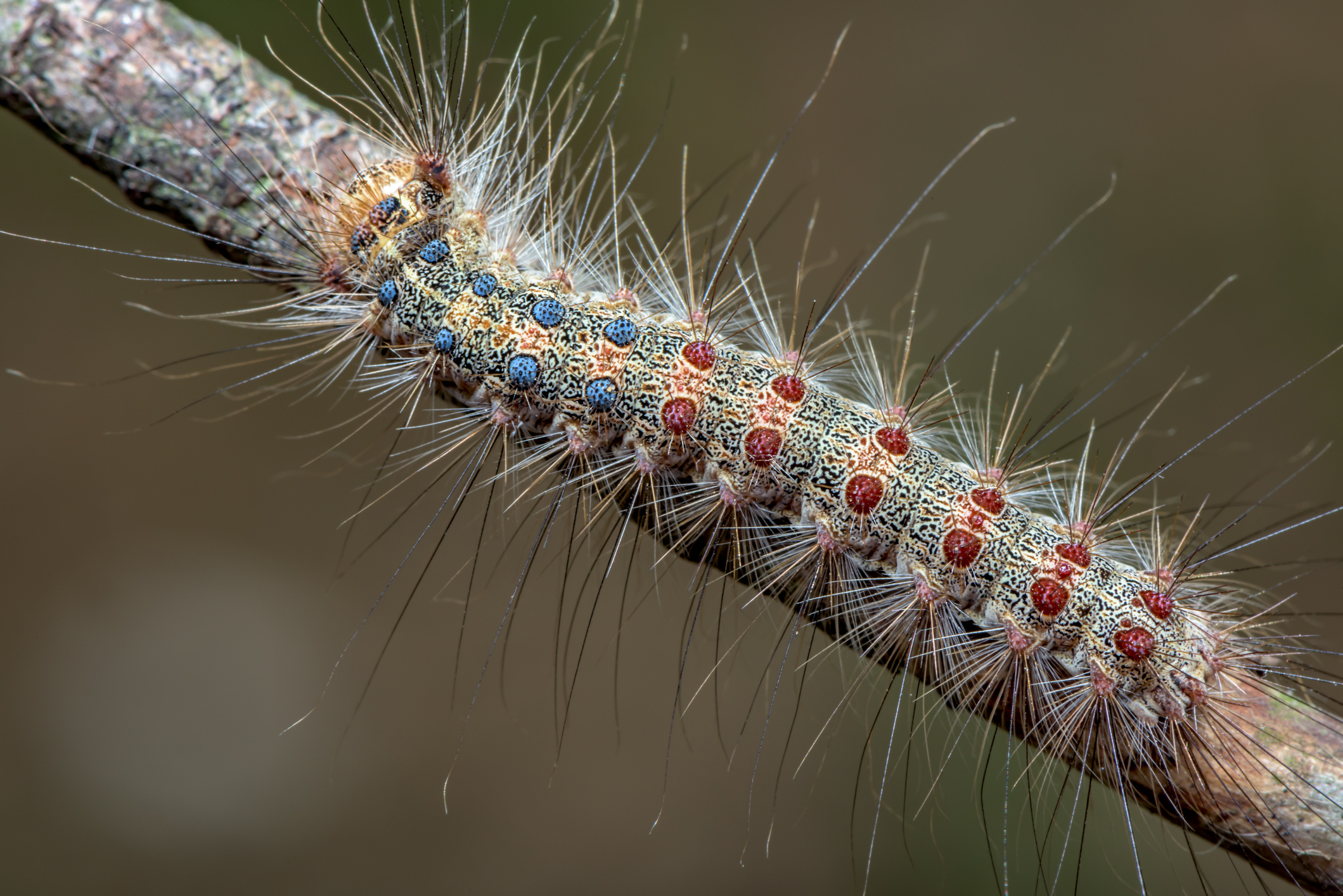
The Lymantria dispar dispar (LDD) now more commonly known as Spongy Moth was introduced to the United States in the late 1800s and first detected in Ontario in 1969. This invasive insect is well established in North America and likely will never be eradicated. Caterpillars grow up to 6 centimetres in length, are dark and hairy with five pairs of blue dots and six pairs of red dots on the back. LDD/Spongy Moth is a species of the moth that get their name from their ability to travel by attaching to various objects. In the winter they lay eggs usually in the bark of trees and in the spring the eggs hatch and larvae ascend the trees to feed on the foliage. Feeding ends by early July and these moth caterpillars will appear late July or August. These pests are destructive and are a concern because the larvae feed on the leaves of trees. During the larvae stage, a single moth caterpillar can eat an average of one square meter of leaves. Late July to December From late July to December the Spongy Moth will enter the Pupa and Moth stages. During this time you should remove all burlap, sheets or anything you have wrapped around your trees. Keeping these items wrapped around the trunk of your tree will impact the tree from expanding and growing, causing damage. You can scrape off any egg masses on the trees and place them in a bucket of soapy water for up to two days. To be safe, wear gloves when handling them.
Frequently Asked Questions
|
European Fire Ants |
|
Controlling fire ant colonies on public propertyThere are no known effective, long-term control methods available for parkland. Known treatments will kill beneficial insects too, which can negatively affect wildlife and the natural food chain. When travelling through Aurora parklands, you're advised to:
Controlling fire ant colonies on private propertyKeep your property clean to avoid a potential European fire ant habitat:
Treatment of fire ant coloniesTry using boric acid bait traps, diatomaceous earth, or pyrethrin (these products can be purchased from local nurseries and hardware stores and should be applied according to product instructions). Or contact a pest control company. If you discover an infestation of European fire ants on your property, treat the colonies quickly to reduce their opportunity to expand into neighbouring areas. Learn more about European Fire Ants. |
Public lands
There are no known effective, long-term control methods available for parkland. Known treatments will kill beneficial insects too, which can negatively affect wildlife and the natural food chain.
When travelling through Aurora parklands, remember to:
- stay on the designated pathways and trails
- always wear covered footwear and long pants to protect yourself from ant stings, etc
- keep dogs leashed and of the designated trail
Private property |
|
Keep your property clean to avoid a potential European fire ant habitat.
If you see an infestation of European fire ants on your property, treat it quickly to reduce the chances of expanding into close areas. Try using these products that can be purchased from local nurseries and hardware stores or contact a pest control company:
|
Noxious weeds
The following noxious weeds are found in Aurora and cause harm to humans:
Poison Ivy |
|
|
Wild Parsnip |
|
|
Giant Hogweed |
|
For more information on how to deal with invasive species please visit Ontario's Invading Species Awareness Program Website. |



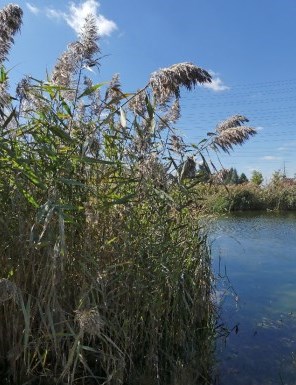 Right photo: Pond on Leslie Street is being encircled by invasive phragmites.
Right photo: Pond on Leslie Street is being encircled by invasive phragmites.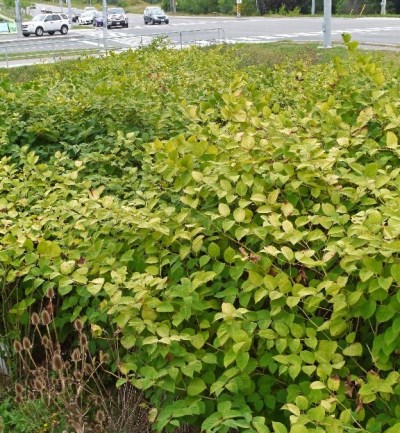
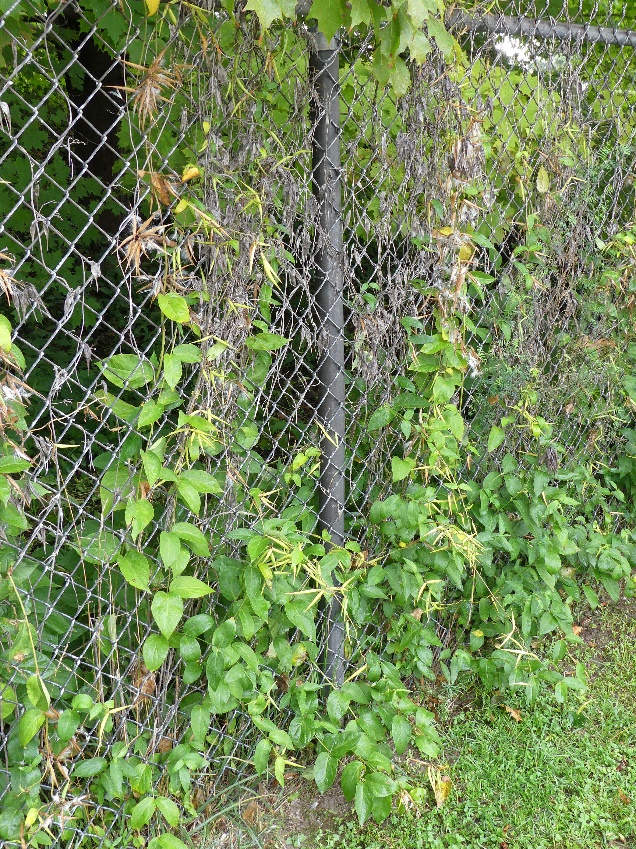
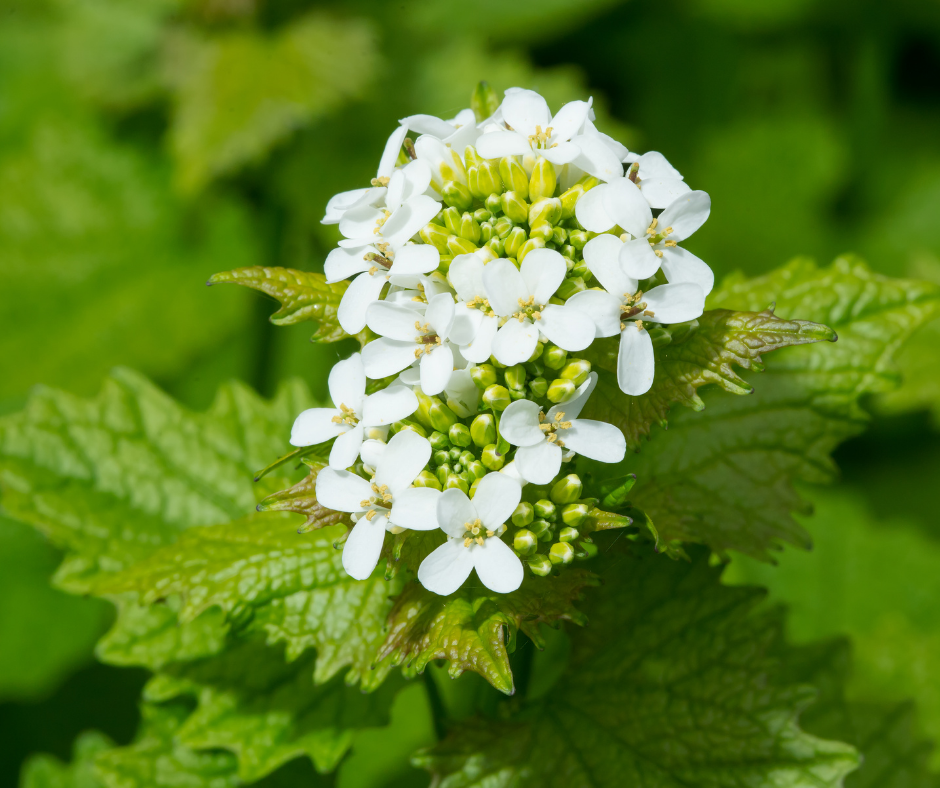 Garlic mustard is an invasive herb native to Europe and was brought to North America in the early 1800s for use as an edible herb. It has a strong smell similar to garlic and since its arrival in North America it has escaped into the wild and is now one of Ontario’s most aggressive forest invaders.
Garlic mustard is an invasive herb native to Europe and was brought to North America in the early 1800s for use as an edible herb. It has a strong smell similar to garlic and since its arrival in North America it has escaped into the wild and is now one of Ontario’s most aggressive forest invaders.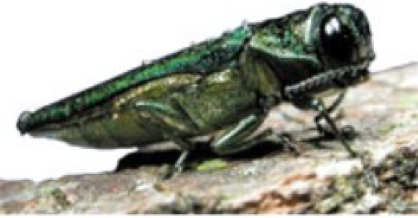
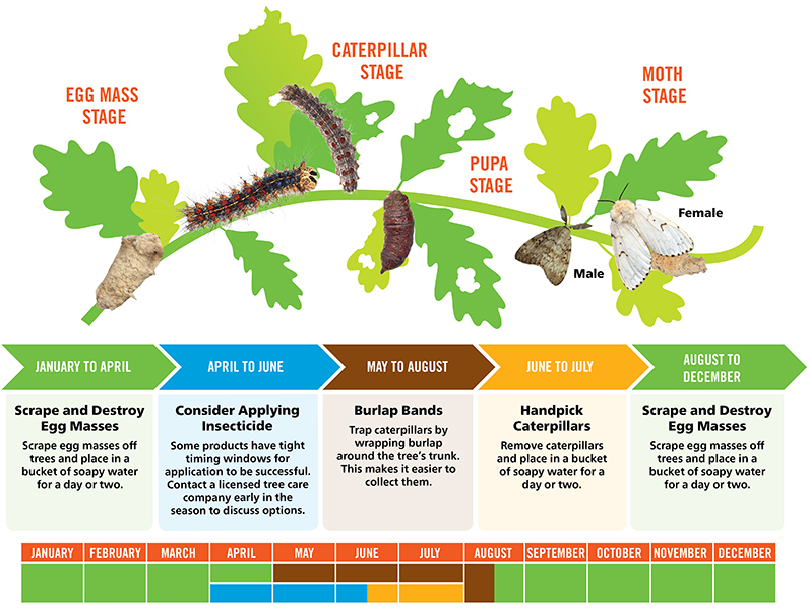
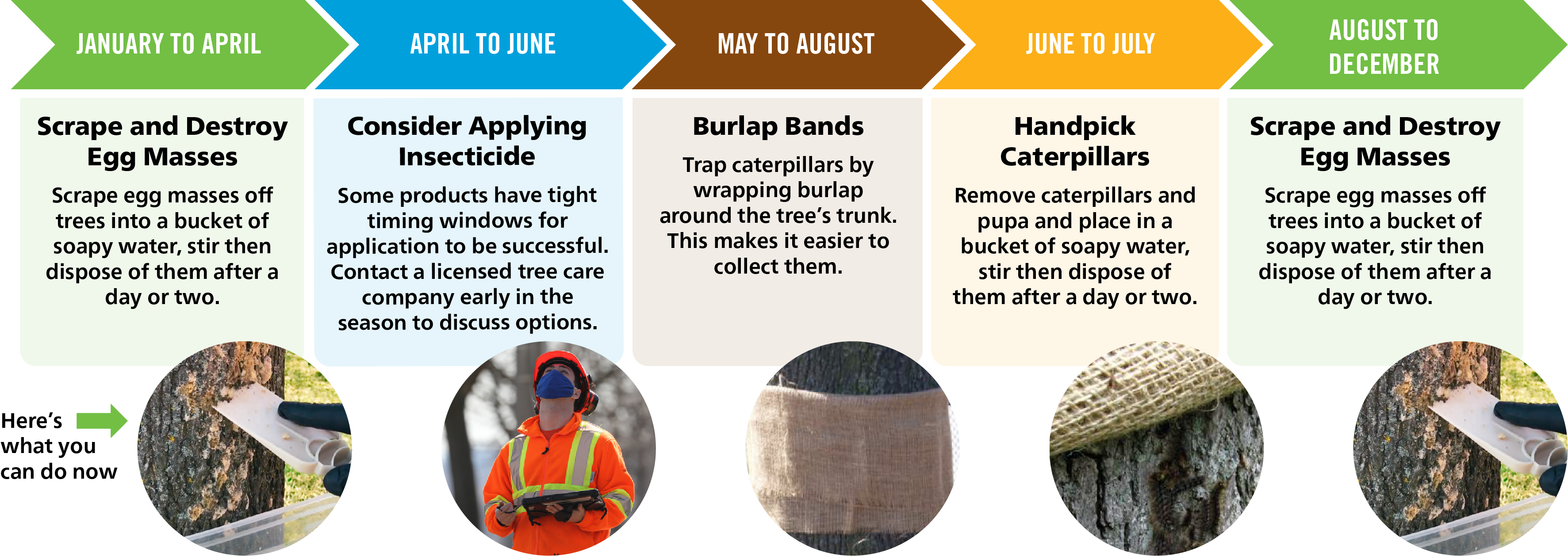
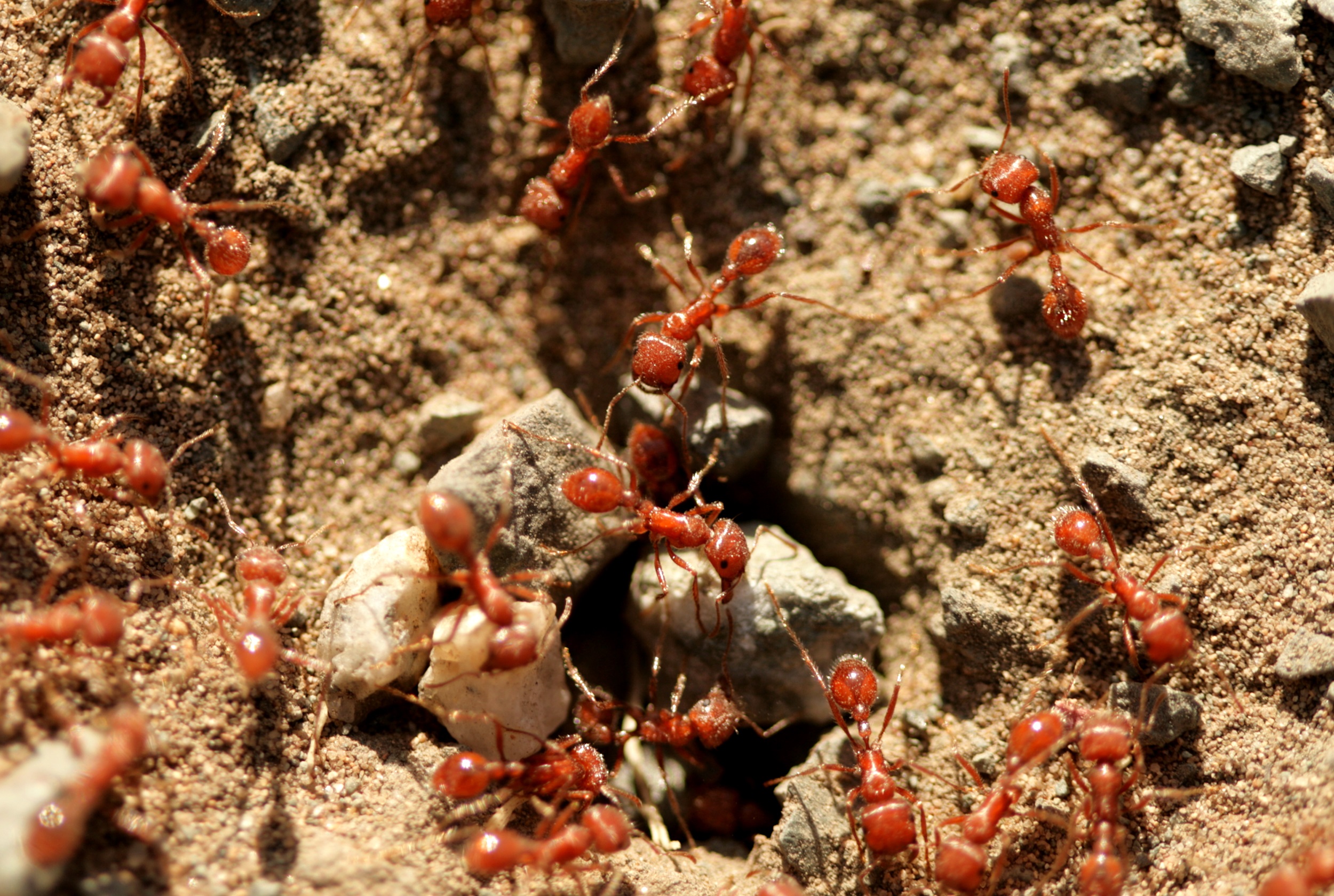 The European fire ant (Myrmica rubra Linnaeus), is an invasive, non-native species that is a nuisance pest for people and potential threat to native species. Over the past 10 years, they have been found in residential and natural areas in the Greater Toronto Area. They nest in damp soils around tree roots and under rocks, logs and rotting debris. These ants sting humans, pets and wildlife to defend their nest.
The European fire ant (Myrmica rubra Linnaeus), is an invasive, non-native species that is a nuisance pest for people and potential threat to native species. Over the past 10 years, they have been found in residential and natural areas in the Greater Toronto Area. They nest in damp soils around tree roots and under rocks, logs and rotting debris. These ants sting humans, pets and wildlife to defend their nest. A harmful weed that produces clusters of three leaves, it can be found along trails and wooded areas. When the sap from this plant comes in contact with the skin, it produces blisters and irritation.
A harmful weed that produces clusters of three leaves, it can be found along trails and wooded areas. When the sap from this plant comes in contact with the skin, it produces blisters and irritation.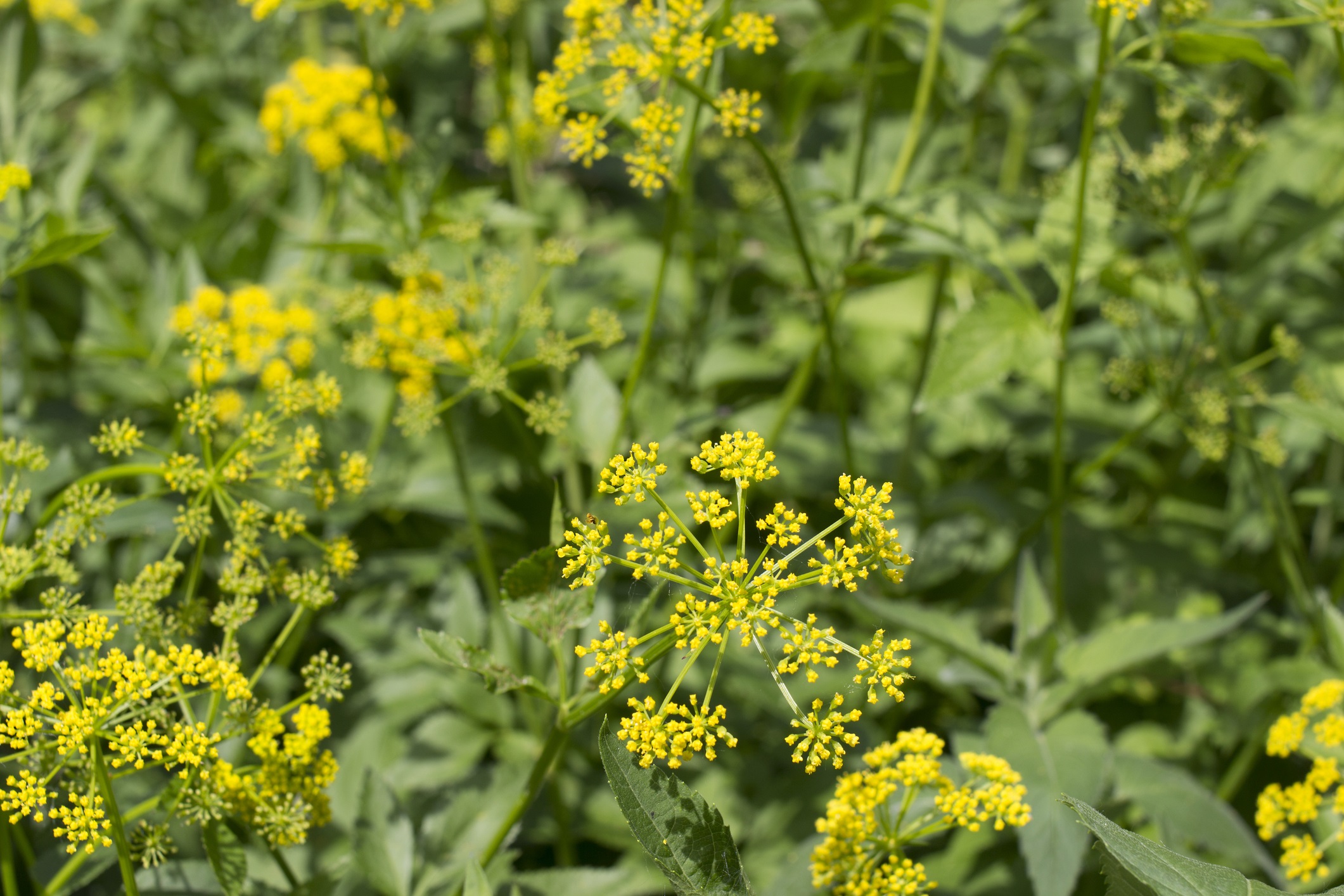 Wild Parsnip is often found in ditches, trails, and residential properties. When the sap from this plant comes in contact with human skin then is exposed to sunlight it causes severe burns and blisters.
Wild Parsnip is often found in ditches, trails, and residential properties. When the sap from this plant comes in contact with human skin then is exposed to sunlight it causes severe burns and blisters.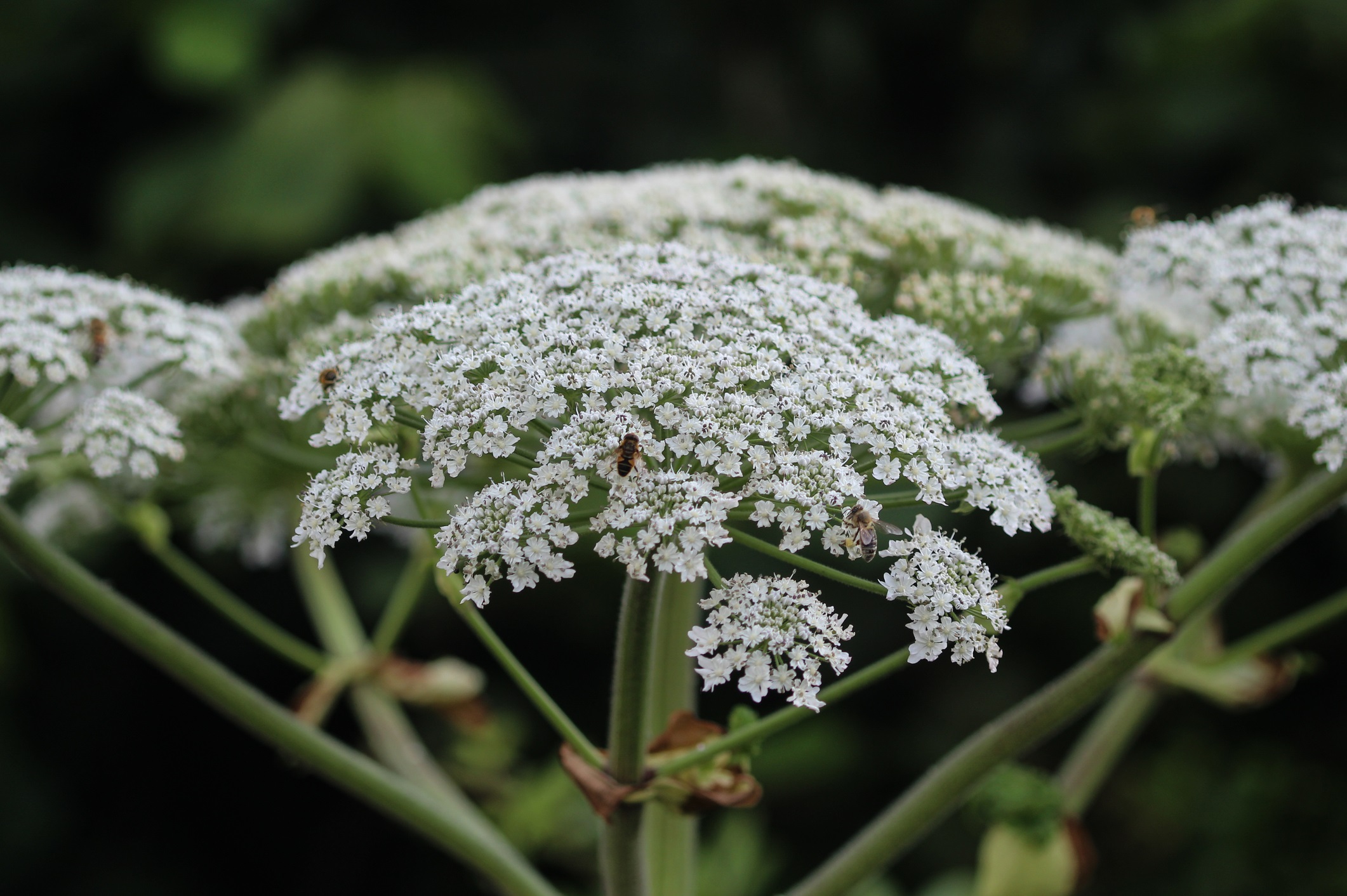 Giant Hogweed is found alongside roads, streams and in open spaces. The sap from this plant can cause severe blisters, burns, and scars. The effects of this plant are further intensified when exposed to sunlight. Eye contact may cause loss of vision.
Giant Hogweed is found alongside roads, streams and in open spaces. The sap from this plant can cause severe blisters, burns, and scars. The effects of this plant are further intensified when exposed to sunlight. Eye contact may cause loss of vision.